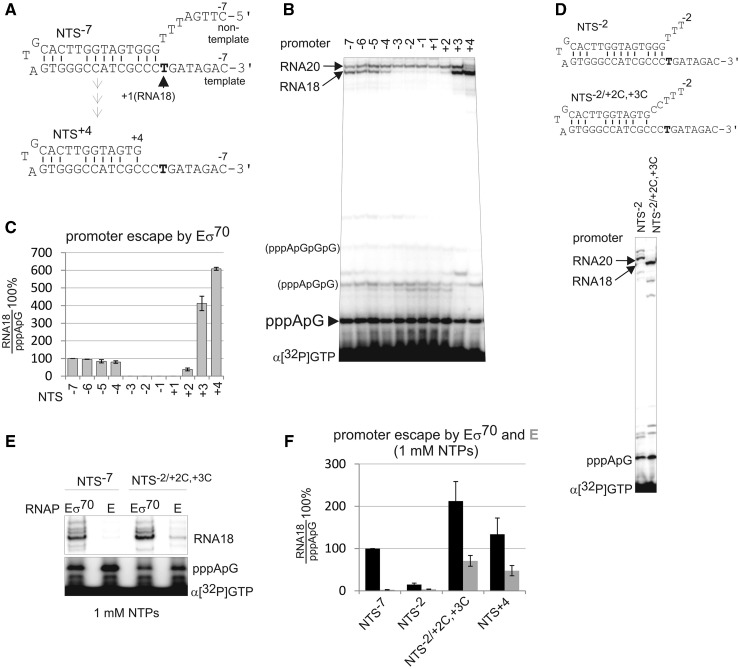Figure 1.
The non-template strand between −4 and +2 is required for DNA melting downstream of the transcription start site and for promoter escape. (A). Structures of M13ori derivatives used in our study. At the top is the initial NTS−7 promoter, which was progressively shortened from the 5′-end to NTS+4 (bottom). (B) Synthesis of abortive and the full-length RNA18 on the NTS−7 promoter and its shorter derivatives by Eσ70 in the presence of all NTPs (no short primers were used). Note that the synthesis of RNA20, which originates upstream of the RNA18 start site, is not affected by non-template strand truncations. A number of minor bands running slower than the abortive dinucleotide correspond to tri- and tetra nucleotides as well as small amount of transcripts resulting from non-specific initiation. These products were not taken into consideration during quantification. (C) Quantification of the results in (B). Here and after, promoter escape was quantified as a ratio of RNA18 to the abortive products (pppApG) and normalized to promoter escape on the NTS−7 promoter. Here, and after, data presented as mean ± SEM from at least three independent experiments. (D) Transcription by Eσ70 on pre-melted promoter NTS−2/+2C,+3C. (E and F) Transcription and promoter escape by holo (Eσ70) (black) and core (E) RNAPs (grey) on templates indicated above the gel and below the histogram were analysed in 1 mM NTPs.

